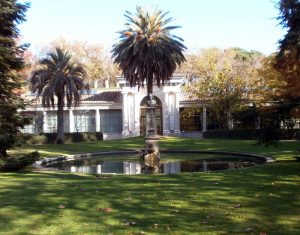The Botanical Gardens, more colourful than ever
At the end of May, when Madrid moved into the first phase of Spain’s lockdown exit strategy, the parks and gardens began to reawaken. It was about time, too, after so much time surrounded by concrete, with glum looks and odd expressions behind masks facing the ground.
 The Botanical Gardens were among those that brought the most joy when they reopened. They’re actually very close to El Retiro, but not at all eclipsed by their neighbour – these gardens are certainly not overlooked by Madrid’s residents.
The Botanical Gardens were among those that brought the most joy when they reopened. They’re actually very close to El Retiro, but not at all eclipsed by their neighbour – these gardens are certainly not overlooked by Madrid’s residents.
Walk from Atocha, climb the Cuesta de Moyano hill and peruse the book stalls that line the boulevard, defying time, technology and the epidemic of people stopping reading that has swept over society from time to time. It has always been a joy to go to the Botanical Gardens, and even more so in the situation that the city and the whole country are currently experiencing.
The Botanical Gardens were born under King Philip II in 1755, situated on the banks of the River Manzanares and home to up to 2000 plants. Then came Charles III, the king who transformed the city of Madrid and who we’ll talk about one day: he moved the gardens to their present location that brings the city closer to nature.
In 1939 the Royal Botanical Gardens became the Spanish National Research Council and began developing into what it is today, with over 5000 species and long gardens and paths, both in the open air and in greenhouses. And that’s not all. The gardens also play host to lots of educational activities and gatherings focused on nature, the environment and sustainability.
Although the opening hours and capacity limit have been reduced, the gardens continue to be an idyllic location to go for a walk and disconnect, admiring their beauty and observing the incredible spectacle of nature beneath the sunny skies of Madrid.
Categories: Madrid Ocio


